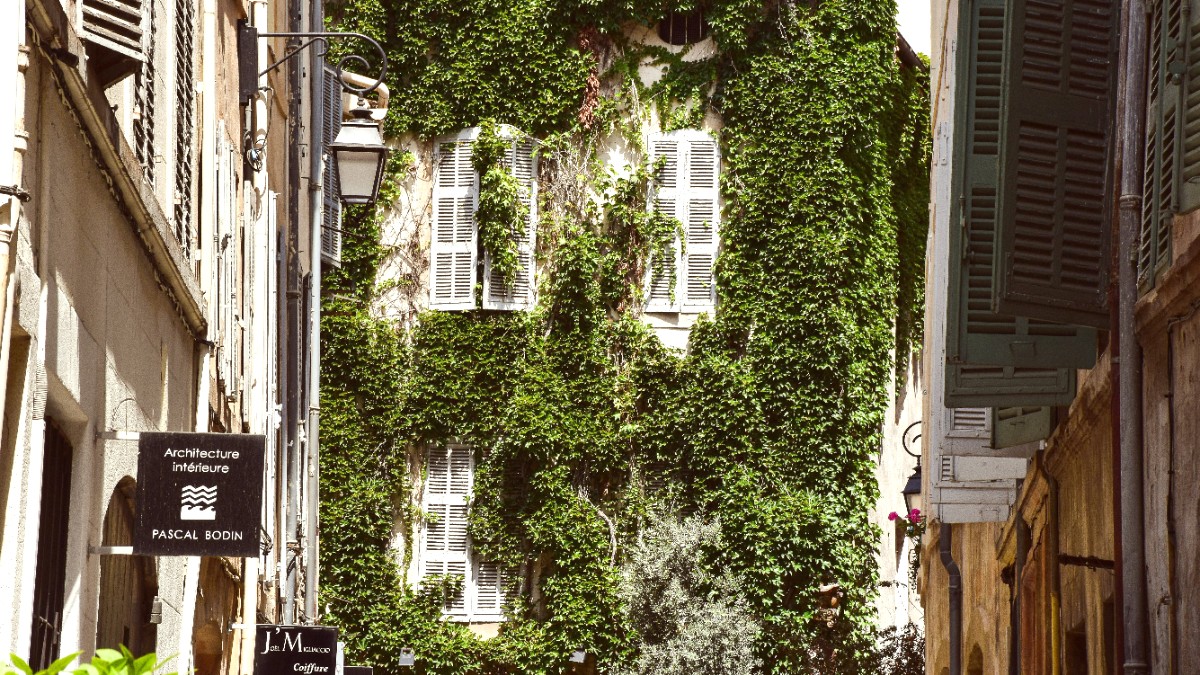
Provence, France
The city rests in the fertile Arc River valley, a landscape shaped by gentle hills and open plains. This setting presents a softer, more undulating terrain compared to the rugged coastal areas or the higher Alpine foothills to the east. The Arc River itself is a modest waterway, but its valley historically supported agriculture, contributing to the region's bounty of wine, olives, and various produce.
Aix-en-Provence's history stretches back over two millennia. The Roman consul Gaius Sextius Calvinus founded the city in 123 BC, naming it Aquae Sextiae. The natural thermal springs in the area were a draw for Roman settlements, providing healing and a strategic point.
In the 15th century, Aix became the capital of Provence under King René of Anjou, a patron of the arts. This era left an architectural legacy, including elegant private mansions (Hôtels particuliers). The city continued its role as a learning and arts hub, with its university attracting students globally. Paul Cézanne, a renowned Post-Impressionist painter, was born here in 1839 and found inspiration in the local landscapes, especially Montagne Sainte-Victoire. His studio stands today as a pilgrimage site for art enthusiasts. Émile Zola, a celebrated French novelist, was a childhood friend of Cézanne's in Aix.
Official Language: French. Provençal is part of the cultural heritage, but French is for daily communication.
Currency: The official currency is the Euro (EUR, €), used throughout France and the Eurozone.
Population: As of 2020, approximately 147,000 residents, a balance of services and a walkable atmosphere.
Time Zone: Central European Time (CET, UTC+1). Central European Summer Time (CEST, UTC+2) during Daylight Saving Time.
Tourism is a major industry, drawing visitors with its historical charm and cultural attractions. The city's thermal springs support a wellness tourism sector. The high-tech sector, notably in aerospace and digital technology, continues its growth in the region. Agriculture maintains an important role, with wine, olives, and lavender contributing to Provence's famed products.
Aix’s historical identity began with its thermal waters. Modern spas continue this tradition.
Deeply connected to Paul Cézanne. His studio and the landscapes he painted are major attractions.
Daily markets offer local produce, textiles, antiques, and artisan crafts.
A collection of beautiful fountains, each with its own character.
The city's warm light, the sound of cicadas, lavender scent, and relaxed pace of life.
Aix-en-Provence presents a clear picture of Provençal life, characterized by its traditions and modern amenities. It blends cultural depth with an inviting, accessible environment. Its history and natural beauty form a backdrop for a fulfilling trip.
Aix feels like a substantial town rather than a sprawling metropolis. This cultivates a sense of community. Exploration within the city center is comfortable due to its moderate elevation.
Visitors walk through streets that echo with centuries of stories. Well-preserved historical architecture, including the grand Cours Mirabeau and the intricate lanes of Vieil Aix (Old Town), connect to the past. The city's numerous fountains do not just decorate squares; they speak of water, trade, and community life. The blend of Roman origins, medieval prosperity, and artistic innovation establishes Aix-en-Provence as a city of deep historical resonance and enduring appeal.
Aix-en-Provence is a destination where history, art, and natural beauty converge, providing a memorable travel experience.
Aix-en-Provence displays a clear picture of Provençal life, characterized by its traditions and modern amenities. This brief overview covers aspects:
Its geographical position makes it a good base for exploring the diverse landscapes of Provence, from the dramatic Calanques coastline to the picturesque Luberon villages. The city presents a clear picture of Provençal life, characterized by its traditions and modern amenities.
The Arc River valley supports agriculture, producing wine, olives, and produce.
Founded by Romans, capital under King René, leaving rich architectural heritage.
Hometown of Paul Cézanne, with his studio open for art lovers.
The Roman consul Gaius Sextius Calvinus established Aquae Sextiae in 123 BC, recognizing the area's thermal springs. This Roman influence set the groundwork for the city's future.